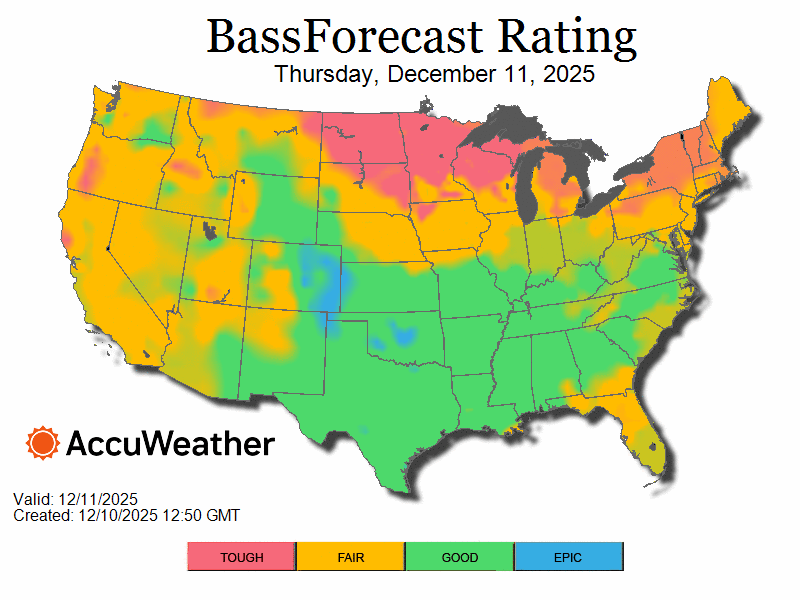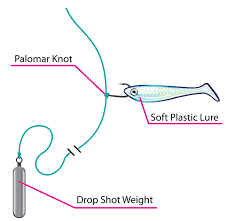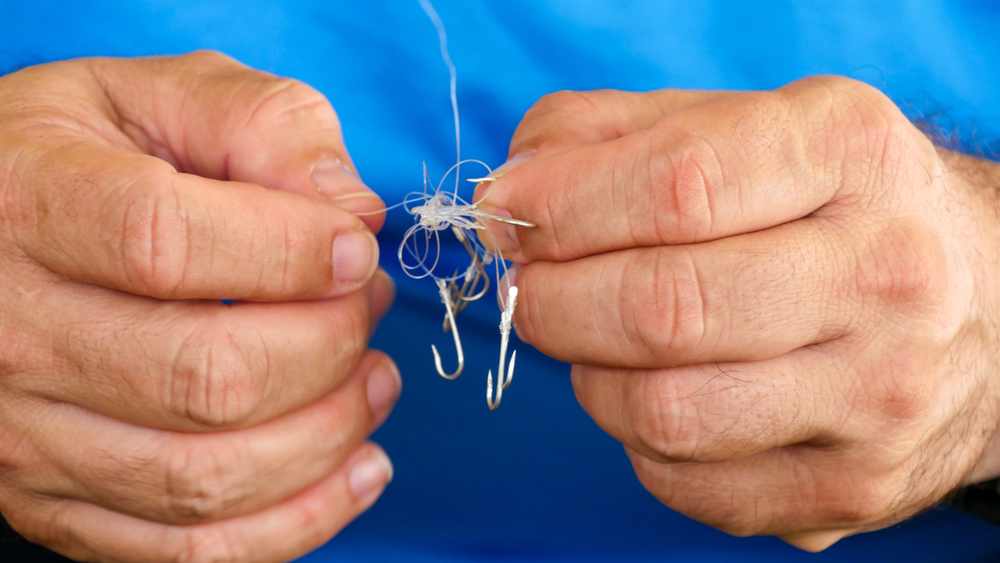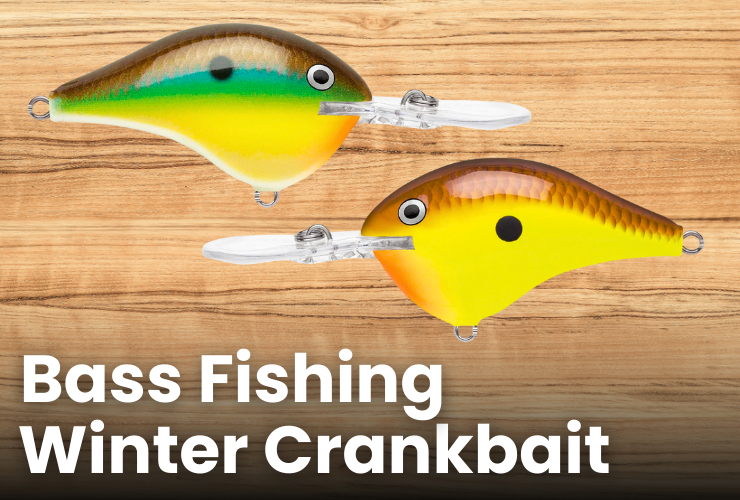Bass Fishing Spoons: A Comprehensive Guide
Share this bass fishing article with every angler you know!
The world of bass lures is vast. Since the use of lures exploded in the 40s and 50s, companies have cooked up practically every type of lure you can imagine, and they’re constantly making little tweaks that make a big difference. In short, it’s a good time to be a bass angler. Your options are nearly limitless.
Of course, that doesn’t mean the classics are outdated or less effective. In fact, several of them will forever be mainstays in every good angler’s tackle box.
One of those is the humble bass fishing spoon.
The spoon is a very basic lure, but it can nab a lot of bass. So, if you haven’t been chucking spoons a lot, the team at Bass Forecast has put together this comprehensive guide to help you add another trick to your repertoire.
Get notified of new bass fishing articles, tips and tricks!
Newsletter Signup
What is a Bass Fishing Spoon?
Most experienced bass anglers know exactly what we’re talking about, but for you new guys, we’ll break it down.
A bass fishing spoon is one of the most basic types of lures out there. It’s just a shaped piece of metal with an attachment point for your line and another for your hook. They usually have treble hooks preinstalled, but you can find a variety of single-hook spoons on the market.
Spoons got their name because they were initially made from, well, spoons. The original spoon lures were just the bowl portion of a spoon cut off with holes drilled to attach lines and hooks. They were homemade lures, and manufactured spoon lures that fill tackle boxes today still somewhat resemble that original design.
You can still make your homemade spoons from the extra silverware you have lying around, and they’ll work great if you know how to use them. However, manufactured spoons are inexpensive. At least, most of them are. You can find extravagant spoons made from special metals or with special features that are a little pricier than usual, but for the most part, you should only have to spend a couple of bucks on a spoon.
How Does a Spoon Work?
A spoon is a fast-sinking, wallowing, lure that can be fished in a variety of ways.
Shiny spoons are meant to shine as the body of the spoon wallows back and forth during the drop or your retrieval pattern, and this triggers bass strikes. However, some spoons are meant to imitate a fish’s behavior and profile more. These are typically painted, and they’ll deviate from the spoon-like shape slightly to better resemble a fish. Rather than flashing, these rely on color patterns to trick the bass.
Some spoons will have divots punched into them, fish head shapes, smooth and curved bodies, oval-shaped bodies, and more. They all more or less function the same way, and you use them the same way. The only difference is how each variety triggers the fish, and sometimes, the difference is subtle.
We’ll go over how you should fish them in a bit, but generally, they work best in open areas and fishing throughout the water column.
What Do Spoons Excel At?
Spoons aren’t like a lot of other lures. Usually, a lure is designed with a specific purpose in mind, and when you stray from that, it doesn’t perform well. Think of a Texas-rigged trick worm just being zipped across the water. It wouldn’t work well.
On the other hand, a spoon is so simple in its design and function that you can use it fairly well in just about any situation. It can be zipped back to shore with brief pauses every ten feet, or it can be allowed to sink to the bottom and bounce around the rocks, or you can use a series of pauses and jerks to keep it in the middle of the column. It all depends on what you want to do, and in most cases, the spoon will work.
However, this doesn’t mean spoons are perfect. In fact, they have some drawbacks.
First, a spoon’s action is mostly just a slight wallow back and forth plus whatever jerking or skimming motion you add to it with your retrieval pattern. So, you’re not getting a ton of distinct action with a spoon. You can adjust it a bit with your rod movements, but it’s nowhere near as dramatic as a creature bait, jig, or anything like that.
Then, there’s the exposed hook. While a spoon can be useful around weeds and such, you have to be extremely careful, or you’ll spend more time fighting snags than you do fishing. The same goes for any areas that are covered with underwater debris. The hook just doesn’t have anything protecting it, and it gets caught on everything.
Finally, they’re basically a jack of all trades but a master of none. Spoons can do a ton of things alright, but they don’t do anything better than a more dedicated lure.
When and Why to Use Spoons
Since spoons are so flexible, let’s go over some of the best places and reasons to use them before we get into our preferred strategy for them.
1: Testing Unknown Waters
If you haven’t been to a specific spot before (e.g. when fishing on a new lake), you might not know what the fish want in that specific spot. Sure, you can cycle through all your lures and color combos, but that takes a ton of time out of your fishing trip.
A spoon can be a great option for situations like that.
In practically any situation, a spoon is likely to catch something. It’s not going to specifically target lunkers like a big swimbait, and you might even catch some non-bass species occasionally depending on the size of the spoon you use, but you’ll be able to test the waters pretty effectively.
2: When Time is Short
Like we said earlier, you don’t always have time to sit around switching up rigs. In that situation, a spoon is a good first lure to try.
Not only is the spoon a very general-use lure, but it can also be fished practically, however, you want effectively. So, if you want to switch retrieval patterns, you can do that, or if you want to suddenly go from sweeping the middle of the column to bouncing on the bottom, you can do that, too.
It’s such a flexible lure choice that you can do practically anything without having to tie a new lure on or switch rigs. This can help you make the most out of a short fishing trip after work, or other situations where every minute counts.
3: Going Deep with Little Structure
There are a ton of lures that work great for fishing deeply in the water column, but the spoon works exceptionally well.
Since a spoon is basically just a hunk of metal, it sinks at a relatively quick pace. The side-to-side wobble that most spoons produce slows it down a little, but that’s a desirable trait a lot of the time. If it wobbles straight down the water column, you get a chance to attract fish on the drop. There will be more on that later.
Either way, it’s like tossing a bare weight in. It’s going to reach the bottom eventually, and its unique shape is going to give it some good action with even the slightest rod twitches.
This makes the humble spoon a great option for fishing deep in the column and bouncing it along. You get an initial chance to draw in bass on the drop, but once you’re on the bottom, you can work it slow and steady.
4: When Flash is Crucial
If you’re fishing in muddier water, and you need to get reaction strikes, a nice, shiny, spoon can reflect even the smallest amount of light to make a pretty attractive flash. Since most spoons are made of steel or brass and highly polished, they should be a go-to whenever a flash is necessary.
How to Fish a Spoon for Bass: Our Recommended Method
Fishing with a spoon is pretty easy because you really can’t mess it up. Any way you fish it, it’s going to perform admirably. The trick is finding the right presentation to get the bass to bite at the spot and time that you’re using it.
So, we recommend taking a very basic approach that stays in the middle of everything for your first few casts. If you don’t catch anything within a few minutes, you can move on and try another retrieval method.
1: Use a Strong Knot
Your knot isn’t going to affect the lure’s action very much when you’re using a spoon. So, you don’t have to get too fancy with it. However, we do recommend using a very strong knot.
Since spoons are more prone to snagging than a lot of popular modern lures, a weak knot can easily cost you your spoon.
We recommend a good Palomar Knot. It’s a little annoying to tie sometimes, but it’s exceptionally strong, and since you won’t need to switch lures every time you want to change your approach, you won’t have to worry about tying it on too often, anyway.
This will minimize the chance of you losing your lure when you snag since the knot won’t come undone. In fact, if you’re using a good line and tension it right, the hook should bend out or snap before the line breaks
2: Choose the Right Spoon for the Water and Situation
Mostly, you’re going to see three types of bass fishing spoons. First, shiny steel spoons are the most common. Then, you have brass spoons that are a bit high-end, but they’re definitely worth buying a couple of. Finally, painted spoons. Painted spoons are chosen just like other lures. You try to match the hatch so bass sees them as a part of the local food chain at any given part of the fishing season.
3: Cast Near Structures and Weeds without Getting Snagged
When positioning your spoon, you want to try to get close to structures and weeds just like you do any other time, but you don’t want to toss it right into anything that will snag it. Bopping it around along the perimeter of such spots can drag bass out quite effectively, and it’s a lot safer for your lure.
Also, keep in mind what the bottom is like. If it’s very rocky and covered in debris, you might want to stop the drop early and retrieve it at a decent pace to keep it off the bottom.
4: Let It Drop
Unless you’re dealing with a debris-filled bottom like we mentioned above, we recommend letting the spoon sink to the bottom, or at least near it.
As we described earlier, this is going to let you work the drop and potentially get a bass before you even start your retrieval. The subtle wobbling of the spoon can cause a flash or just enough vibration to get nabbed right up. If you see your line go tight too soon, that’s likely what happened.
5: Paused Hops
A lot of a spoon’s action occurs when it’s being ripped or allowed to free fall. So, once it’s on the bottom, we recommend giving it a jerk to pull it a couple of feet up, and then let it free fall during a brief pause of about 5 seconds.
You can repeat this pattern all the way back to shore or the boat, or you can mix it up with side jerks that give it a new trajectory.
6: Frequent Spot Changes
Since you’ll be fishing this rig slower, you don’t want to just sit in one spot nonstop. A bass fishing spoon is more than flexible enough to pull in bass within a short period of time if they’re there. It’s recommended to switch things up every 15 to 20 minutes and move on to a nearby spot. You don’t need to move clear across a lake, but a good 50 feet down the bank, or downstream in a boat, will be a good move to make sure you’re not wasting time on empty spots.
Get More Tips with our Bass Forecast Fishing App!
Mastering the use of bass fishing spoons can significantly enhance your angling skills. For even more insights and tips, don't forget to download the Bass Forecast fishing app.
It's packed with features to help you plan and execute your fishing trips with precision. Plus, our app offers access to a wealth of other informative blogs just like this one, guiding you toward becoming a more successful and informed bass angler.
Dive deeper into the world of bass fishing – download our app and explore our blogs today!





.jpg)



.png)
.png)